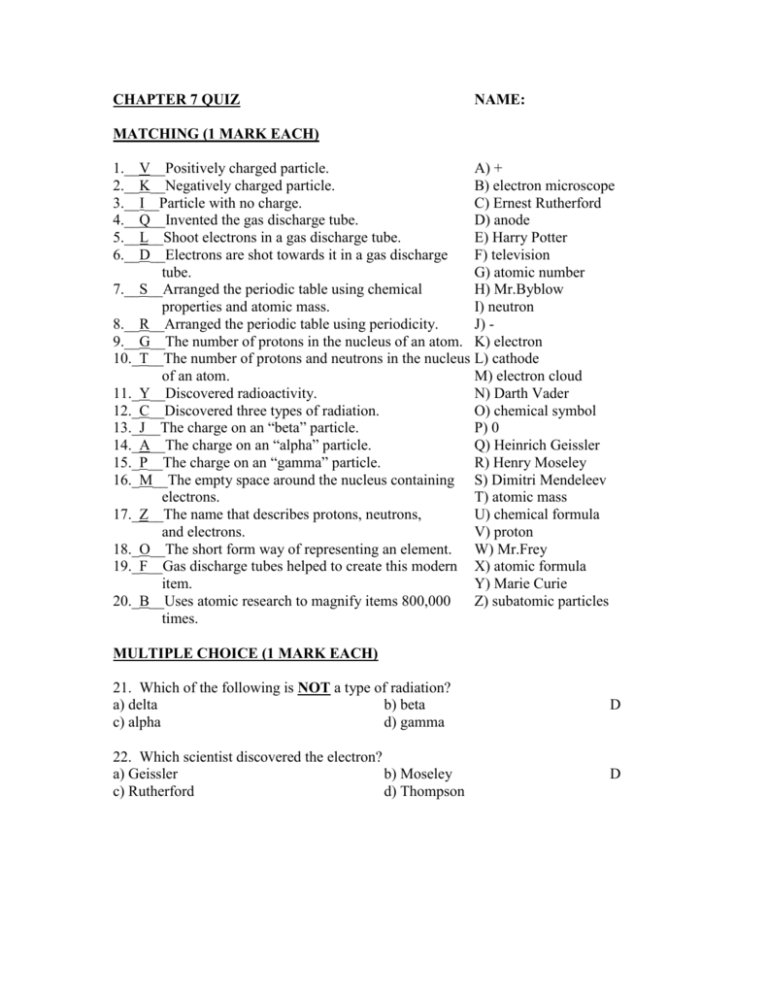chapter 7 quiz
advertisement

CHAPTER 7 QUIZ NAME: MATCHING (1 MARK EACH) 1.__V__Positively charged particle. A) + 2.__K__Negatively charged particle. B) electron microscope 3.__I__Particle with no charge. C) Ernest Rutherford 4.__Q__Invented the gas discharge tube. D) anode 5.__L__Shoot electrons in a gas discharge tube. E) Harry Potter 6.__D__Electrons are shot towards it in a gas discharge F) television tube. G) atomic number 7.__S__Arranged the periodic table using chemical H) Mr.Byblow properties and atomic mass. I) neutron 8.__R__Arranged the periodic table using periodicity. J) 9.__G__The number of protons in the nucleus of an atom. K) electron 10._T__The number of protons and neutrons in the nucleus L) cathode of an atom. M) electron cloud 11._Y__Discovered radioactivity. N) Darth Vader 12._C__Discovered three types of radiation. O) chemical symbol 13._J__The charge on an “beta” particle. P) 0 14._A__The charge on an “alpha” particle. Q) Heinrich Geissler 15._P__The charge on an “gamma” particle. R) Henry Moseley 16._M__The empty space around the nucleus containing S) Dimitri Mendeleev electrons. T) atomic mass 17._Z__The name that describes protons, neutrons, U) chemical formula and electrons. V) proton 18._O__The short form way of representing an element. W) Mr.Frey 19._F__Gas discharge tubes helped to create this modern X) atomic formula item. Y) Marie Curie 20._B__Uses atomic research to magnify items 800,000 Z) subatomic particles times. MULTIPLE CHOICE (1 MARK EACH) 21. Which of the following is NOT a type of radiation? a) delta b) beta c) alpha d) gamma D 22. Which scientist discovered the electron? a) Geissler b) Moseley c) Rutherford d) Thompson D 23. Which statement is NOT true? a) ALL ATOMS HAVE PROTONS AND NEUTRONS b) ALL PROTONS ARE THE SAME, ALL ELECTRONS ARE THE SAME c) PROTONS ARE POSITIVE, ELECTRONS ARE NEGATIVE d) PROTONS HAVE EQUAL AND OPPOSITE CHARGES e) PROTONS HAVE MORE MASS THEN ELECTRONS A 24. What is an atom that has gained or lost neutrons? a) anion b) compound c) isotope d) cation C 25. What do you do to calculate the number of neutrons? a) atomic number + atomic mass b) atomic number – atomic mass c) atomic mass – atomic number d) atomic mass + atomic number C




